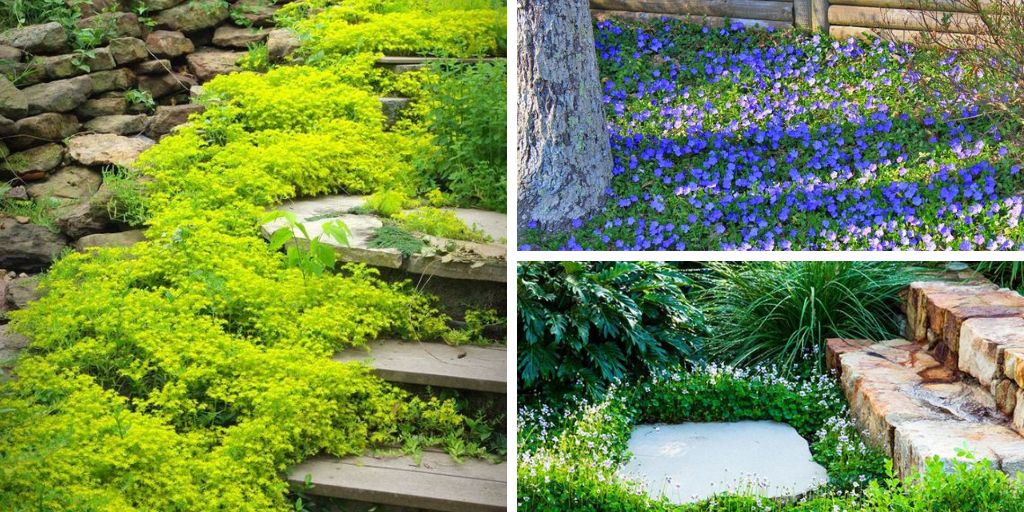Sun-deprived locations might benefit greatly from the use of Shade Loving Ground Covers. You can choose one from the following list for your garden.
There is no need to panic if your garden lacks sunshine. This collection of Shade-Loving Ground Covers will make your garden seem fantastic!
Ground Covers that Thrive in the Shade:
1. Hosta

Botanical Name: Hosta spp.
USDA Zones: 3-8
Hostas with green to blue leaves like Halcyon hosta are ideal for areas with a lot of deep shadows. At the same time, cultivars with gold leaves and variegated leaves, such as ‘Patriot’ and ‘Minuteman,’ need some direct sunlight.
2. Barrenwort
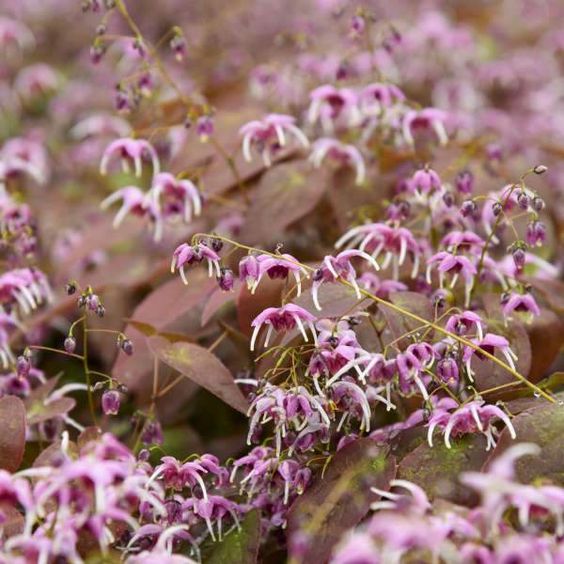
Botanical Name: Epimedium × rubrum
USDA Zone: 5-9
This tall cultivar, sometimes known as Bishop’s hat, has white blossoms with yellow centres. A rose-coloured ‘Rose Queen’ and three different colors of Epimedium x rubrum produce beautiful blooms. Both of these plants do well in dry, shady environments.
3. Bunchberry
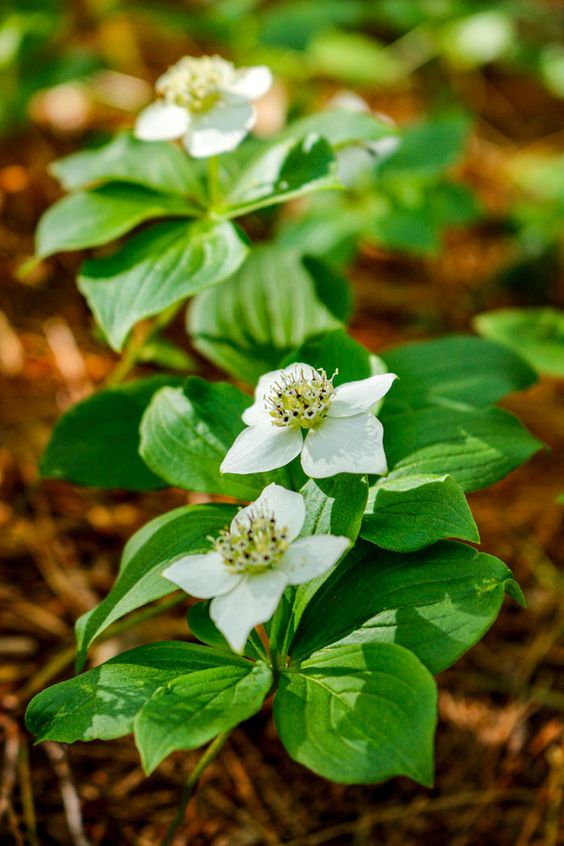
Botanical Name: Cornus canadensis
USDA Zone: 2-6
This low-growing deciduous shrub, native to the northern areas of North America, is classified as a kind of dogwood. For shaded regions, it can grow up to 3 to 9 inches tall and is a wonderful ground cover. It’s a real show stopper when it’s in full bloom.
4. Spotted Dead-nettle
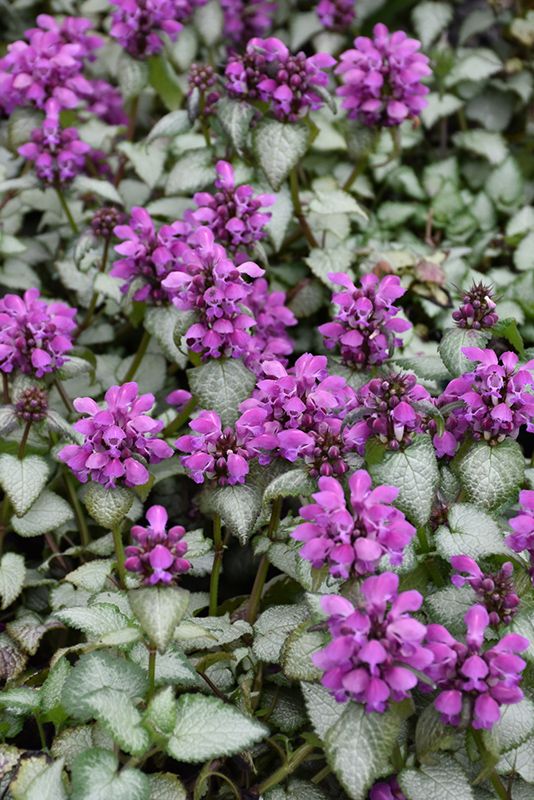
Botanical Name: Lamium maculatum
USDA Zone: 3-8
Flowers in shades of pink, white, or purple bloom on an evergreen ground cover. The leaves are variegated. Some areas of the Northeast and Northwest of the United States are deemed invasive because of it. With its dense bed of leaves, the plant can grow up to six to nine inches tall.
5. Creeping Liriope
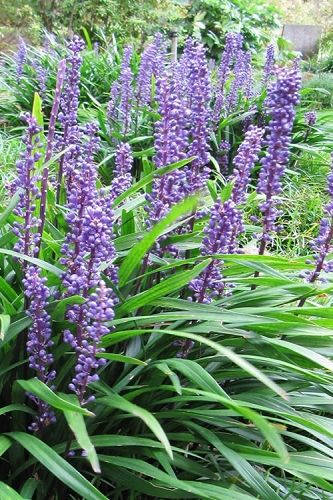
Botanical Name: Liriope spicata
USDA Zone: 4-10
This shade-invading invasive ground cover is a pain in the southern United States, but it’s not so bad up north. It spreads quickly, generating grass-like clusters, and grows quickly up to 10-20 inches.
6. Sweet Woodruff
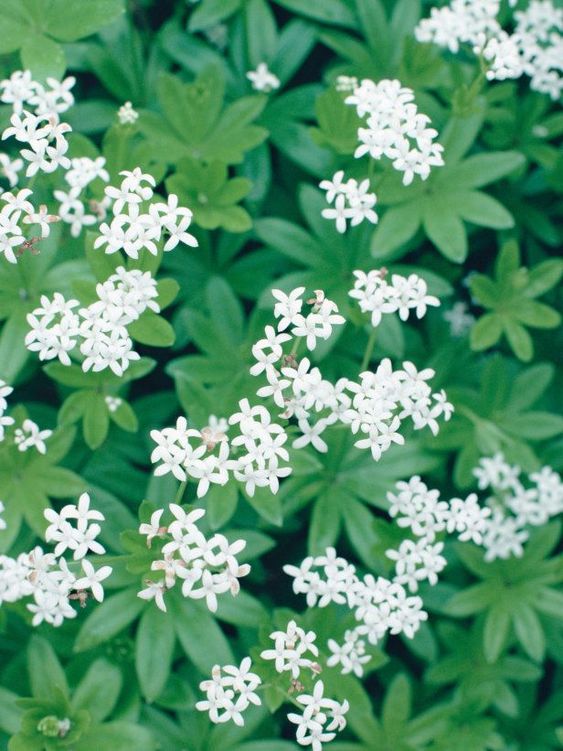
Botanical Name: Galium odoratum
USDA Zone: 4-8
In ideal growing conditions, this mat-forming perennial can grow up to 8-12 inches tall and spread out attractively. In some parts of the country, it is regarded as an invasive species. Even so, pruning can be used to control it.
7. Common Periwinkle
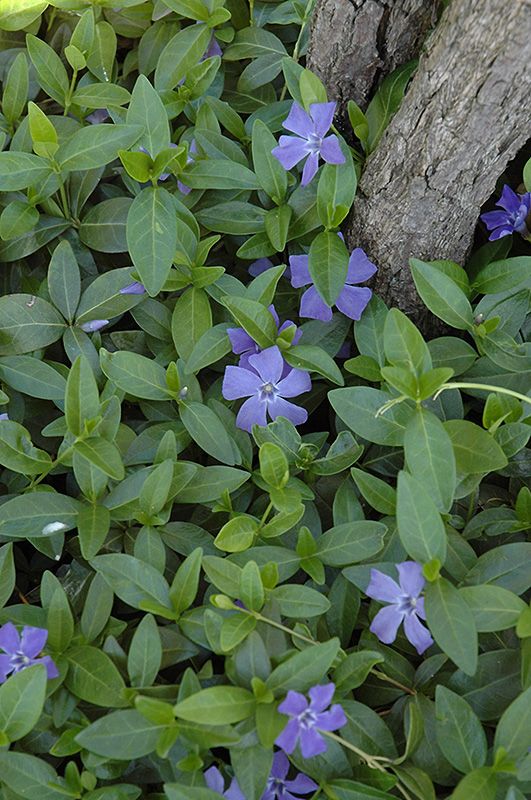
Botanical Name: Vinca Minor
USDA Zone: 4-11
The purple/lavender blossoms of this beautiful ground cover are a favorite among gardeners. It is able to thrive on a wide range of soils. When it comes to Vinca Minor, only dedicated gardeners who can keep it in check need to apply.
8. Bugleweed
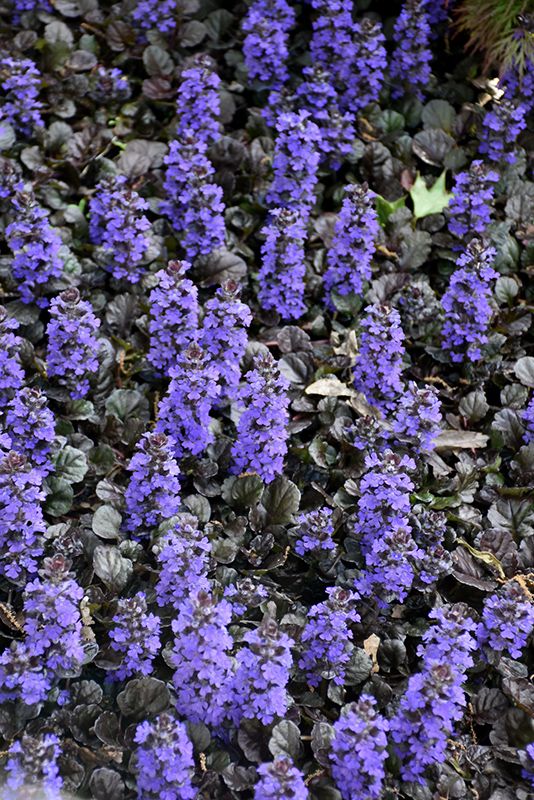
Botanical Name: Ajuga reptans
USDA Zone: 3-10b
It’s also known as carpet bugleweed, and its copper-purple foliage and purple-blue blossoms make it an excellent year-round addition to the landscape. The plant thrives in bright, well-ventilated spaces that are partially shaded.
9. Carpet Box
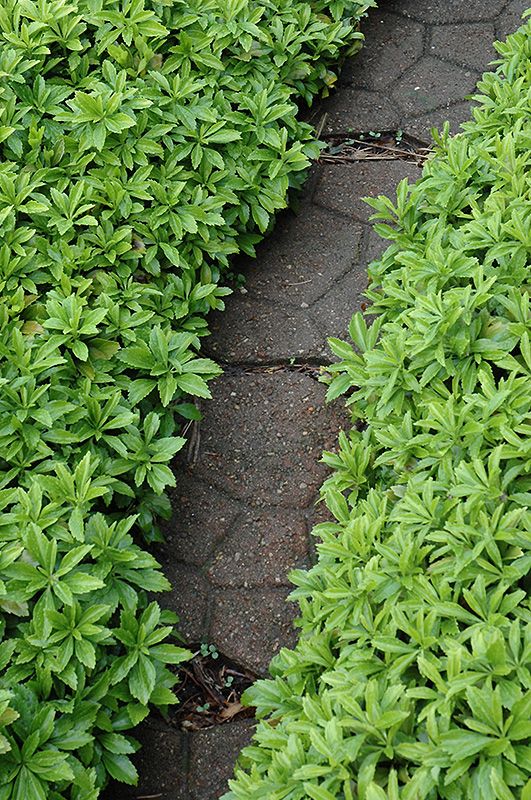
Botanical Name: Pachysandra terminalis
USDA Zone: 5-9
In the genus Pachysandra, there are five species, the most common of which are Japanese Pachysandra (also known as Japanese spurge). It can reach heights of six to twelve inches, generating a dense mat of foliage.
10. Creeping Saxifrage

Botanical Name: Saxifraga stolonifera
USDA Zone: 6-11
This wonderful ground cover has a remarkable capacity to produce progeny. Silver-veined leaves with scarlet margins form a carpet beneath its feet. In addition to the asymmetrical white blossoms, the shrub is distinctive in appearance.
11. Wild Geranium
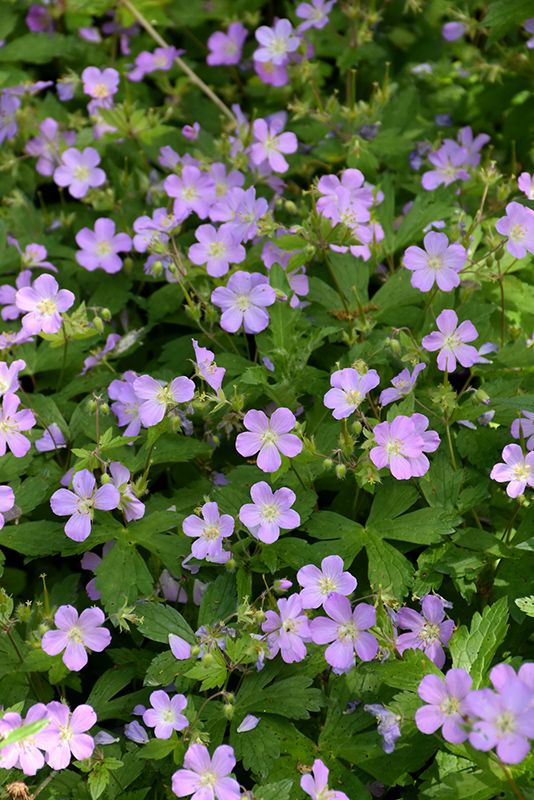
Botanical Name: Geranium maculatum
USDA Zone: 4-9
Long-lasting, stunning purple blooms adorn this bushy groundcover. With deep lobed grey-green deciduous foliage, it can reach heights of 18-24 inches. Large lilac-pink flowers are also produced by the shrub.
12. White Inside-Out Flower
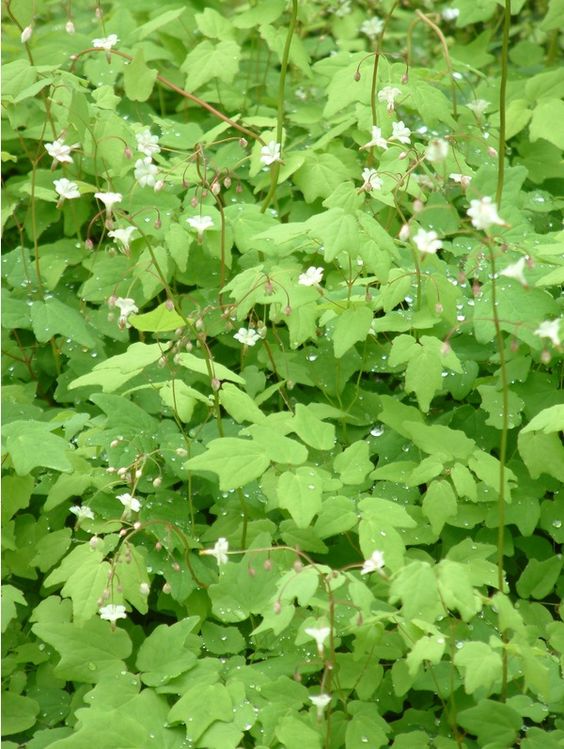
Botanical Name: Vancouveria hexandra
USDA Zone: 5-9
In early summer, masses of pale green leaves with tiny white blossoms appear on this elegant ground cover, making it ideal for damp shade. Full to partial shade and slightly acidic soil is ideal conditions for this plant, which thrives under these conditions.
13. Yellow Archangel
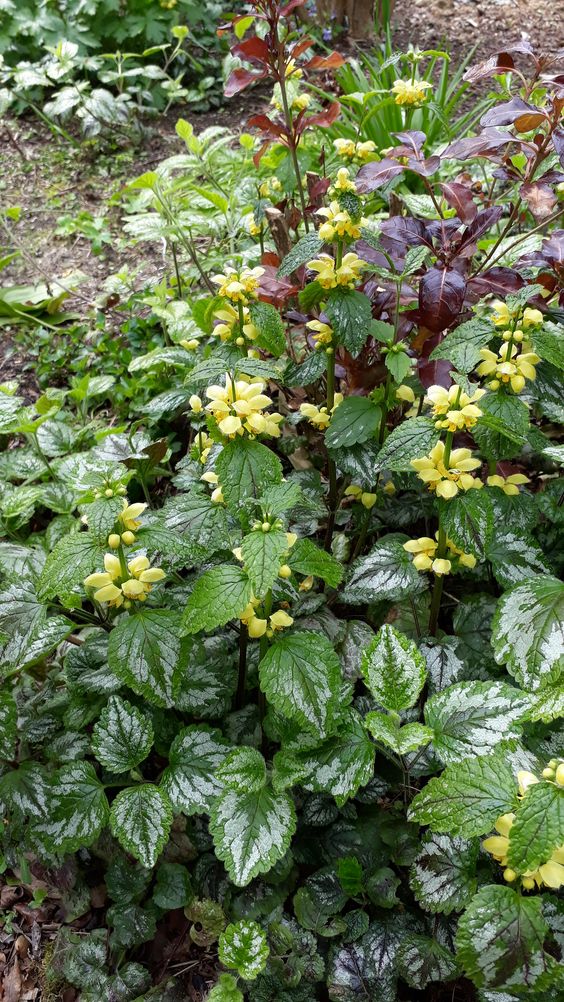
Botanical Name: Lamium galeobdolon
USDA Zone: 4-8
The silver-green leaves of this fast-growing decorative ground cover make an 8-12 inch high, dense carpet. It bears yellow flowers in the early spring. With other brightly colored blossoms, the plant creates a striking contrast.
14. Golden Star Grass

Botanical Name: Chrysogonum virginianum
USDA Zone: 5-9
Long-lasting ground cover with bright yellow blooms and lush green leaves. It grows to a height of 4-6 inches as a dense ground cover. This is a must-have if you’re a fan of the color yellow.
15. Wild Ginger
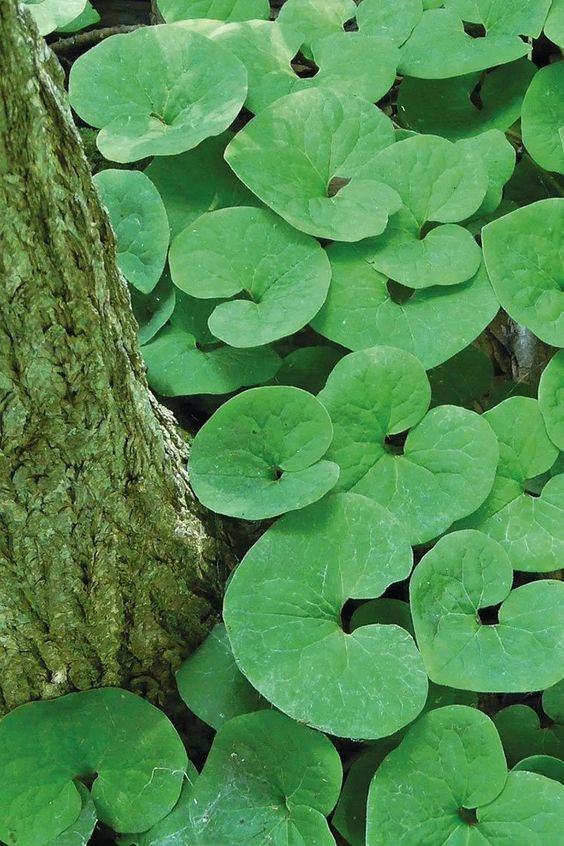
Botanical Name: Asarum
USDA Zone: 6-9
With its variegated evergreen foliage, Wild Ginger produces a dense screen that is easy to maintain. It spreads slowly, forming mats of leaf 2 to 4 inches high. It’s the 2 to 3-inch wide leaves with silver patterns in a beautiful grey-green tint that steal the show.
16. Lenten Rose
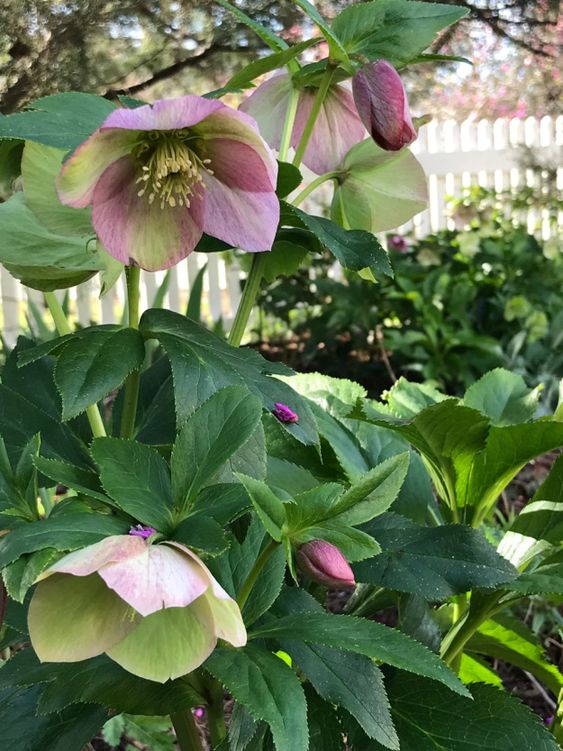
Botanical Name: Helleborus orientalis
USDA Zone: 4-9
Glossy, dark green foliage covers this shade-loving ground cover. For optimal growth, it needs a modest amount of irrigation. Blooms from Ivory Prince are some of the most durable.
17. Christmas Ferns
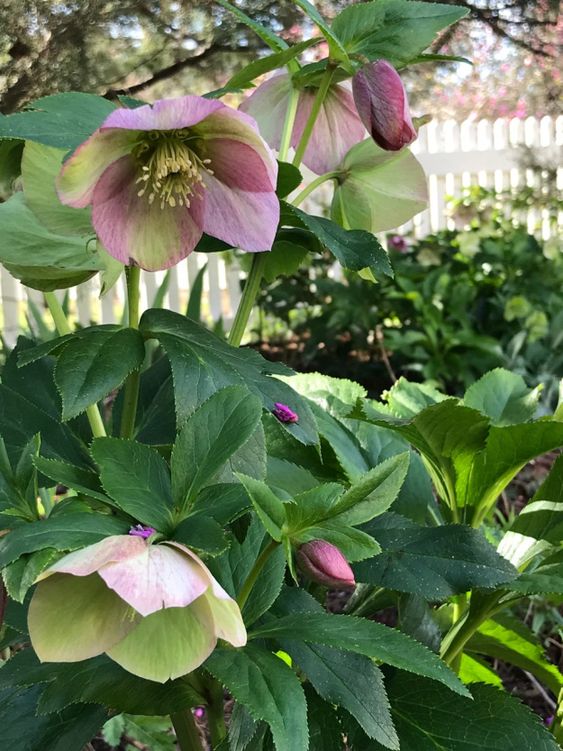
Botanical Name: Polystichum acrostichoides
USDA Zone: 3-9
This attractive plant is a superb ground cover when planted in dense masses. The evergreen leaves, which may reach a height of up to a foot, look charming in the snow. To get the finest display, combine it with any of the other bright groundcovers on this list.
18. Purple Heart
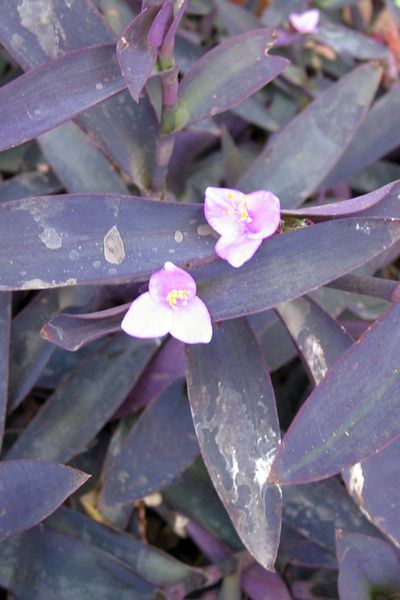
Botanical Name: Tradescantia pallida
USDA Zone: 7-12
It thrives in both full sun and partial shade, making it an excellent choice for the garden. In gardens and borders, the plant can grow up to 8-12 inches tall.
19. Leatherwood Fern
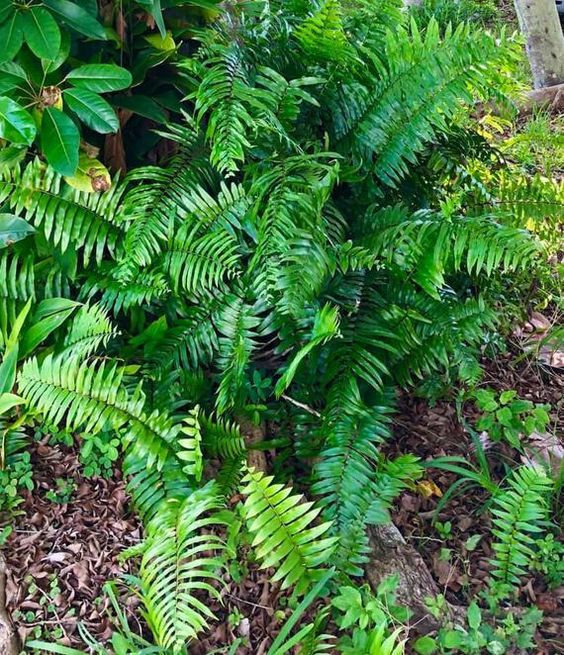
Botanical Name: Dryopteris marginalis
USDA Zone: 3-8
It is also known as the marginal shield fern, and it can grow up to 18-24 inches tall and spread the same distance. The leathery dark blue-green fronds can grow to be 5-8 inches wide.
20. Impatiens
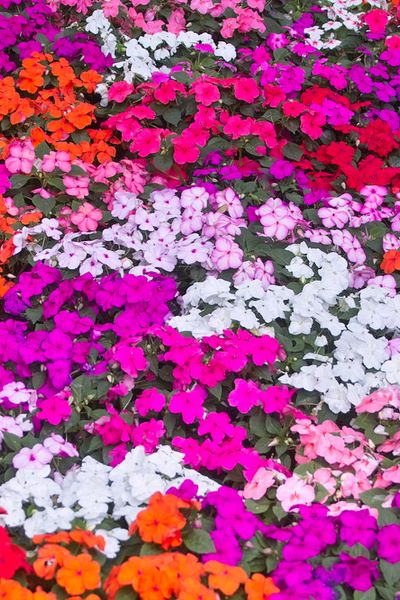
Botanical Name: Impatiens walleriana
USDA Zone: 7-11
It is a lovely ground cover with dramatic, brilliant, multicolored flowers and dark to light green bi-colored leaves that is perfect for any garden or landscape. Plant at a distance of 8-12 inches apart for ground cover to keep it at a low level.
21. Mint

Botanical Name: Mentha
USDA Zone: 3-11
Mint is the ideal ground cover since it thrives in partial to full shade. Low-growing, 1-3-inch-tall Corsican mint is available.
22. Ornamental Sweet Potato
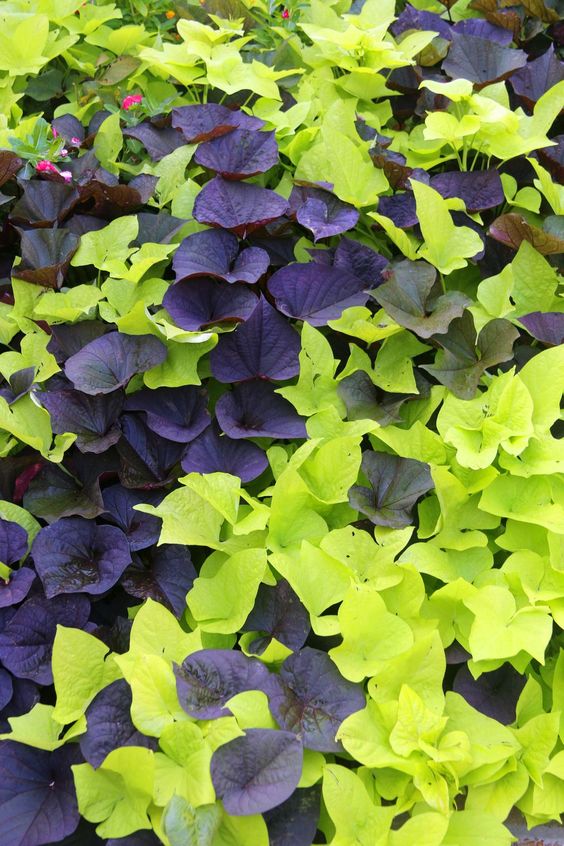
Botanical Name: Ipomoea batatas
USDA Zone: 9-11
This drought-tolerant ornamental vine spreads quickly and looks great as a ground cover. Even in the shadow, it may thrive.
23. Variegated Ground Ivy
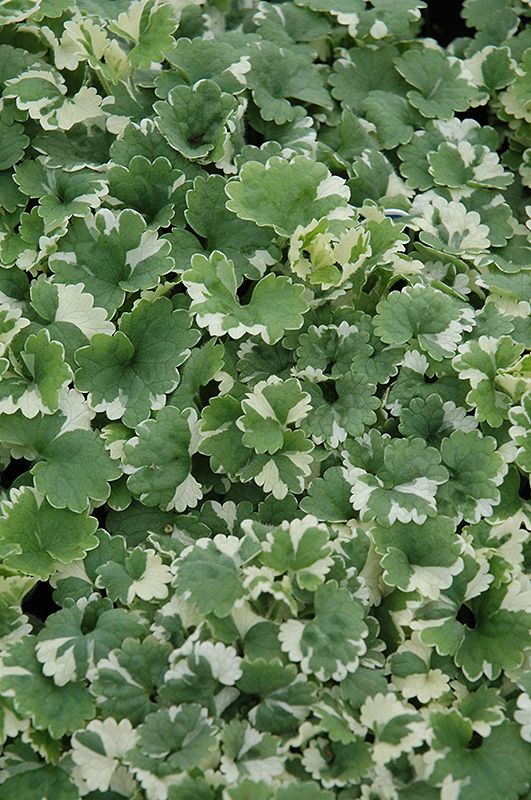
Botanical Name: Glechoma hederacea ‘Variegata’
USDA Zone: 4-9
Round green leaves with creamy white variegation adorn this lovely ground cover. During the spring, the plant produces spikes of violet-blue flowers.
24. Cuban Oregano
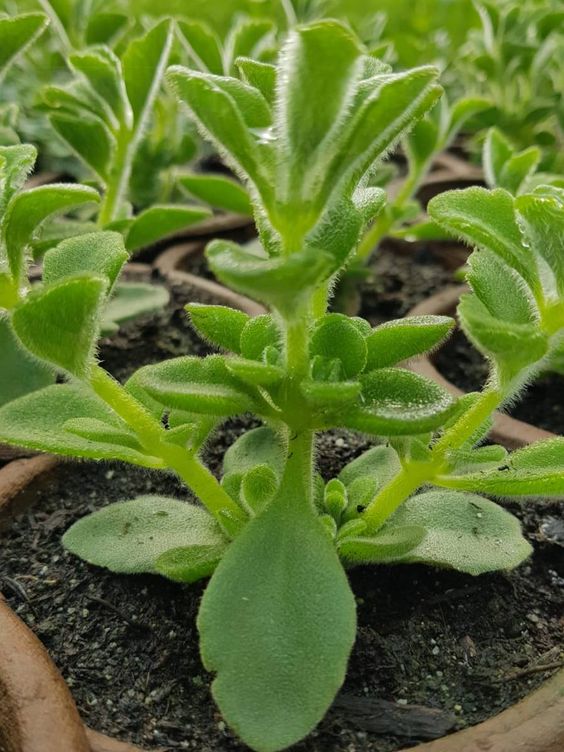
Botanical Name: Plectranthus amboinicus
USDA Zone: 9-11
The tasty, round-shaped, fragrant leaves of this evergreen perennial have toothed edges and trumpet-shaped pink, lavender, or white blossoms.
25. Creeping Jenny
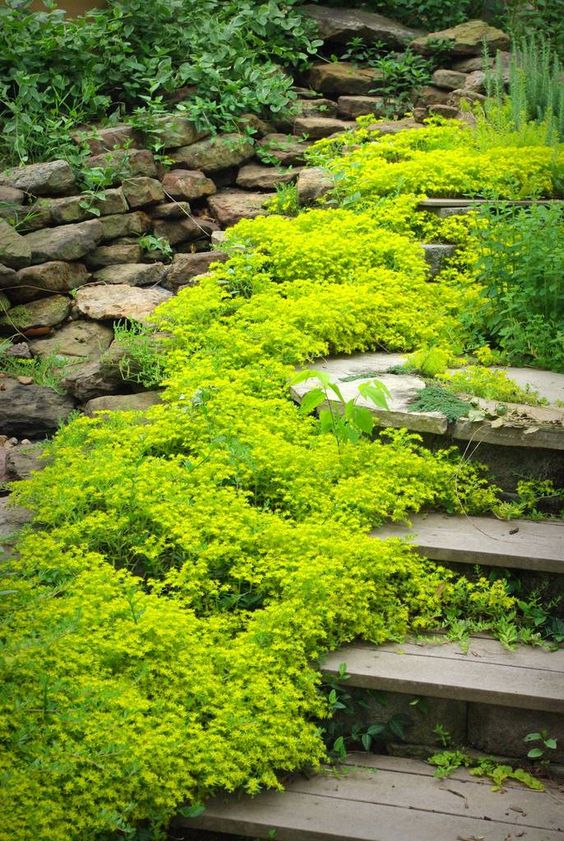
Botanical Name: Lysimachia nummularia ‘Moneywort’
USDA Zone: 4-9
Its vibrant, lime green oval leaf forms a lovely carpet on the stems of this evergreen perennial. Yellow cup-shaped blossoms cover the plant in profusion.
26. Blue Star Creeper
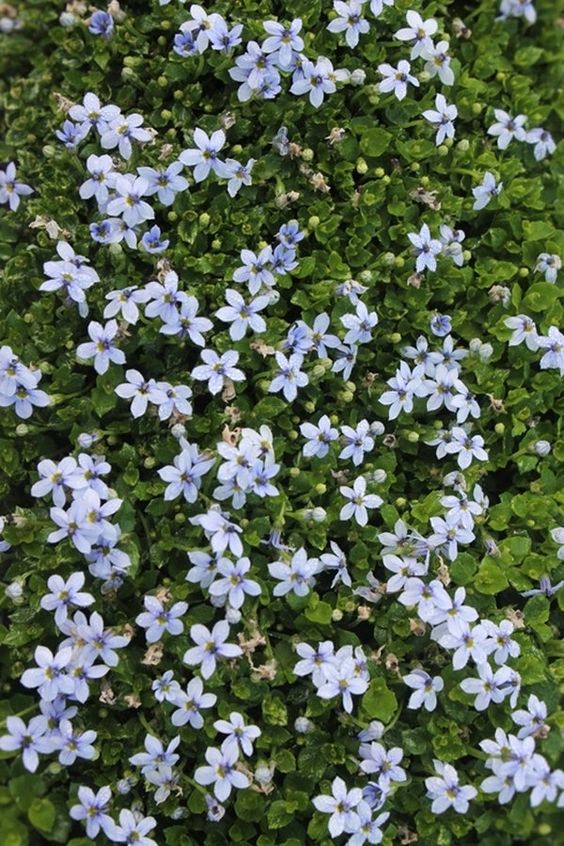
Botanical Name: Isotoma fluviatilis
USDA Zone: 6-9
Short, dark green leaves of the Blue Star Creeper make a dense mat up to 3 inches tall with an 18-inch spread.
Note: For flowers to grow, this ground cover needs direct sunlight. It can grow in partial sunlight, but it won’t produce as much foliage as it would in direct sunlight.
27. Golden Sweet Flag
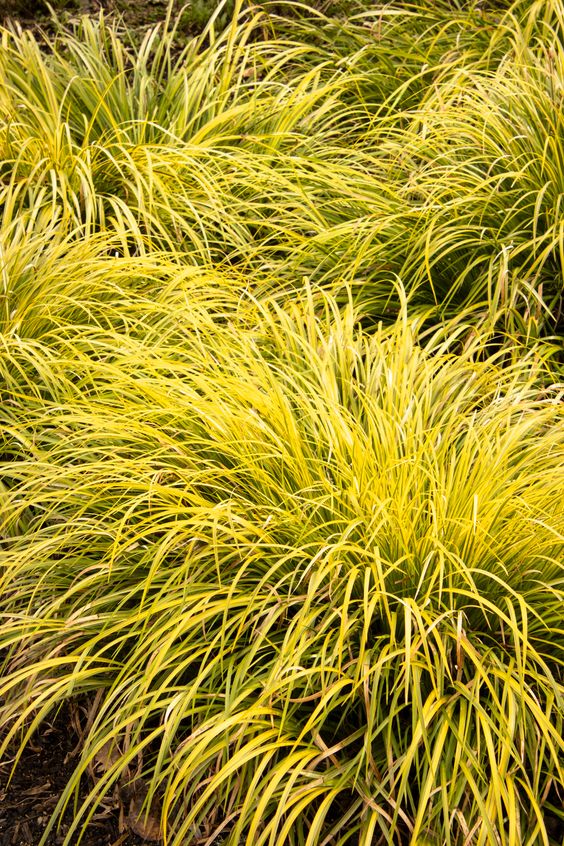
Botanical Name: Acros gramineus ‘Ogon’
USDA Zone: 6-9
The dense sword-like thin fronds of this perennial aquatic plant form a tufted pile. However, you can plant it in partial shade if you wish.
Note: As a result of its aquatic nature, it must be watered on a regular basis. Grow in or near water to keep the soil moist.
28. Blue Lily Turf
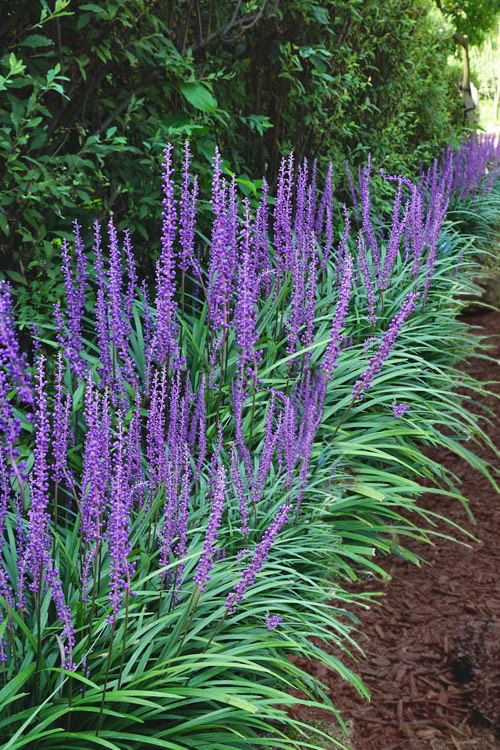
Botanical Name: Liriope muscari
USDA Zone: 5-10
For a garden path flanked by a ground cover, look no further! The shrub can reach a height of 12-16 inches and bears tiny purple flowers.
29. Wandering Jew
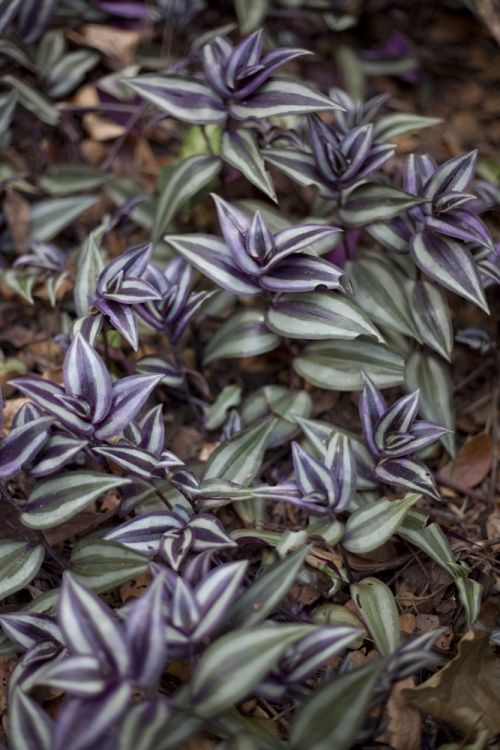
Botanical Name: Tradescantia zebrina
USDA Zone: 7-11
Yes! If you prune Wandering Jew regularly, you can use it as a low-maintenance ground cover. In addition, it’s one of the simplest plants to grow out there.

